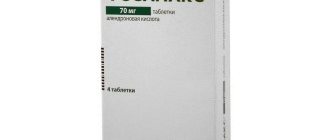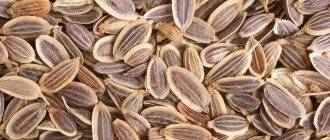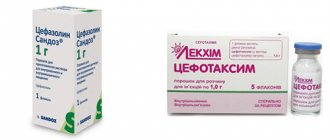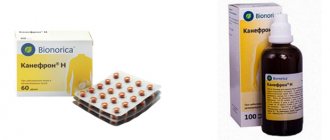Pharmacological properties of the drug Zinnat™
Pharmacodynamics . Cefuroxime axetil (cefuroxime 1-acetoaxetyl ester) is an oral form of the cephalosporin antibiotic cefuroxime. It is bactericidal, resistant to most β-lactamases, and active against a wide range of gram-positive and gram-negative microorganisms. The bactericidal effect of cefuroxime is due to inhibition of the synthesis of the cell membrane of microorganisms. Cefuroxime is highly active against the following microorganisms: gram-negative aerobes: Haemophilus influenzae (including ampicillin-resistant strains), Haemophilus parainfluenzae, Moraxella (Branhamella) catarrhalis, Neisseria gonorrhoeae (including penicillinase-producing and non-penicillinase-producing strains), Escherichia coli, Klebsiella spp ., Proteus mirabilis, Providencia spp., Proteus rettgeri; gram-positive aerobes: Staphylococcus aureus and Staphyloccocus epidermidis (including penicillinase-producing strains, but excluding methicillin-resistant strains), Streptococcus pyogenes (and other β-hemolytic streptococci), Streptococcus pneumoniae, group B Streptococcus (Streptococcus agalactiae); anaerobes: gram-positive and gram-negative cocci (including Peptococcus and Peptostreptococcus spp. ), gram-positive bacteria (including Clostridium ) and gram-negative bacteria (including Bacteroides and Fusobacterium spp.), Propionibacterium spp.; other microorganisms: Borrelia burgdorferi ; microorganisms resistant to cefuroxime: Clostridium difficile, Pseudomonas spp., Campylobacter spp., Acinetobacter calcoaceticus, Listeria monocytogenes , methicillin-resistant strains of Staphylococcus aureus and Staphylococcus epidermidis, Legionella spp. ; microorganisms, some strains of which are resistant to cefuroxime: Enterococcus (Streptococcus) faecalis, Morganella morganii, Proteus vulgaris, Enterobacter spp., Citrobacter spp., Serratia spp., Bacteroides fragilis. Pharmacokinetics . After oral administration of cefuroxime, axetil is absorbed in the intestine, hydrolyzed in its mucous membrane and enters the systemic circulation as cefuroxime. The optimal level of absorption is observed when taken immediately after a meal. The maximum concentration of cefuroxime in the blood plasma is observed approximately 2-3 hours after taking the drug. The half-life is approximately 1–1.5 hours. The degree of binding to plasma proteins is 33–55%, depending on the determination method. Cefuroxime is excreted unchanged by the kidneys by tubular secretion and glomerular filtration. Concomitant use of probenecid increases AUC by 50%. Plasma levels of cefuroxime decrease during dialysis.
Indications for use of the drug Zinnat™
Infections caused by microorganisms sensitive to the drug:
- ENT organs (otitis media, sinusitis, tonsillitis, pharyngitis);
- lower respiratory tract (pneumonia, acute bronchitis and exacerbation of chronic bronchitis);
- urinary system (pyelonephritis, cystitis and urethritis);
- skin and soft tissues (furunculosis, pyoderma and impetigo);
- gonorrhea, acute uncomplicated gonococcal urethritis and cervicitis;
- early manifestations of Lyme disease and subsequent prevention of late manifestations of Lyme disease in adults and children over the age of 12 years.
Zinnat tablet film 250 mg pack contact cell/pack of cards x10
Zinnat tablet film 250 mg pack cont cell/pack card x10, ATX code: J01DC02 (Cefuroxime) Active substance: cefuroxime (cefuroxime) Rec.INN registered by WHO
Dosage form
ZINNAT®
tab., cover film-coated, 250 mg: 10 pcs.reg. No.: P N015531/01 dated 03/06/09 - Indefinitely
Release form, composition and packaging
White or almost white film-coated tablets, oval, biconvex, with “GX ES7” engraved on one side and a white or almost white core on the cross section.
1 tab.
cefuroxime axetil* 300.72 mg,
which corresponds to the content of cefuroxime 250 mg
Excipients: microcrystalline cellulose** - 95.03 mg, croscarmellose sodium - 40 mg, sodium lauryl sulfate - 4.5 mg, hydrogenated vegetable oil - 8.5 mg, colloidal silicon dioxide - 1.25 mg.
Film shell composition: hypromellose - 7.4 mg, propylene glycol - 0.44 mg, methyl parahydroxybenzoate - 0.07 mg, propyl parahydroxybenzoate - 0.06 mg, opasprey white dye - 2.03 mg (hypromellose - 3%, titanium dioxide - 36%, sodium benzoate - 0.1%).
* the amount of cefuroxime axetil correlates depending on the purity of the substance used. ** The amount of microcrystalline cellulose is correlated to maintain a constant core mass.
Clinical-pharmacological group: II generation cephalosporin Pharmaco-therapeutic group: Antibiotic, cephalosporin
pharmachologic effect
Pharmacokinetics,
Indications
Treatment of infectious and inflammatory diseases caused by microorganisms sensitive to the drug:
- infections of the upper respiratory tract, ENT organs (otitis media, sinusitis, tonsillitis, pharyngitis),
- lower respiratory tract infections (including pneumonia, acute bacterial bronchitis and exacerbation of chronic bronchitis),
- genitourinary tract infections (including pyelonephritis, cystitis, urethritis),
- infections of the skin and soft tissues (including furunculosis, pyoderma, impetigo),
- gonorrhea: acute uncomplicated gonorrheal urethritis and cervicitis,
- treatment of borreliosis (Lyme disease) at an early stage and prevention of late stages of this disease in adults and children over 12 years of age.
Cefuroxime is also available as a sodium salt (Zinacef®) for parenteral administration. This allows for stepwise therapy, using a transition from parenteral to oral cefuroxime, if there is a clinical indication for this.
If necessary, step-down therapy is indicated in the treatment of pneumonia and exacerbation of chronic bronchitis.
The sensitivity of bacteria to cefuroxime varies regionally and over time. Where possible, local sensitivity data should be taken into account (see section "Pharmacological action").
ICD-10 codes,
Dosage regimen
The standard course of therapy is 7 days (can vary from 5 to 10 days). For optimal absorption, the drug should be taken after meals.
Adults
Indications Dose
Most infections 250 mg 2 times / day
Urinary tract infections (cystitis, urethritis) 125 mg 2 times a day
Pyelonephritis 250 mg 2 times/day
Mild and moderate lower respiratory tract infections, for example, bronchitis 250 mg 2 times a day
More severe lower respiratory tract infections or if pneumonia is suspected 500 mg 2 times a day
Uncomplicated gonorrhea 1 g once
Borreliosis (Lyme disease) in adults and children over 12 years of age 500 mg 2 times a day for 20 days
Step therapy
Cefuroxime is also available as a sodium salt (Zinacef®) for parenteral administration, which allows the same antibiotic to be prescribed sequentially when switching from parenteral to oral therapy is necessary. The drug Zinnat® is effective after parenteral use of the drug Zinacef® for the treatment of pneumonia and exacerbation of chronic bronchitis.
The duration of parenteral and oral courses of treatment is determined by the severity of the infection and the clinical picture.
Pneumonia
The drug Zinacef® (cefuroxime in the form of sodium salt) at a dose of 1.5 g 2-3 times a day (IV or IM) for 48-72 hours, then the drug Zinnat® (cefuroxime axetil) orally at a dose of 500 mg 2 times/day for 7-10 days.
Exacerbation of chronic bronchitis
The drug Zinacef® (cefuroxime in the form of sodium salt) at a dose of 750 mg 2-3 times a day (IV or IM) for 48-72 hours, then a course of treatment with Zinnat® (cefuroxime axetil) orally at a dose 500 mg 2 times/day for 5-10 days.
Children from 3 years old
Most infections 125 mg (1 tablet of 125 mg) 2 times a day. Maximum daily dose - 250 mg
Otitis media or more severe infections 250 mg (1 tablet of 250 mg or 2 tablets of 125 mg) 2 times a day. Maximum daily dose - 500 mg
Zinnat® tablets should not be broken or crushed.
Therefore, this dosage form is not used to treat patients with swallowing difficulties, incl. small children who cannot swallow a whole tablet. For children, the drug Zinnat® can be prescribed in the form of granules for the preparation of a suspension for oral administration.
Patients with impaired renal function
Cefuroxime is excreted primarily by the kidneys.
It is recommended to reduce the dose of cefuroxime in patients with severe renal impairment to compensate for delayed elimination (see table below).
Creatinine clearance T1/2 (hours) Recommended dose
≥30 ml/min 1.4-2.4 No dose adjustment required.
10-29 ml/min 4.6 Standard single dose every 24 hours.
<.10 ml/min 16.8 Standard single dose every 48 hours.
During hemodialysis 2-4 One additional standard single dose should be taken at the end of each dialysis session.
Side effect
Adverse reactions when using cefuroxime axetil are usually mild, short-lived and reversible.
The adverse reactions presented below are listed according to the damage to organs and organ systems and the frequency of occurrence. The frequency of occurrence is determined as follows: very often (≥1/10), often (≥1/100 and <.1/10), infrequently (≥1/1,000 and <.1/100), rarely (≥1/10 000 and <.1/1,000), very rarely (<.1/10,000, including isolated cases). Frequency categories were formed based on clinical studies of the drug and post-registration surveillance.
Infectious and parasitic diseases: often - excessive growth of Candida fungi.
From the hematopoietic and lymphatic system: often - eosinophilia, infrequently - positive Coombs test, thrombocytopenia, leukopenia (sometimes severe), very rarely - hemolytic anemia. Cephalosporins are absorbed onto the surface of the cell membrane of red blood cells, binding to anti-cephalosporin antibodies, resulting in a positive Coombs test (which may affect cross-compatibility) and, in very rare cases, hemolytic anemia.
From the immune system: hypersensitivity reactions, incl. uncommon: skin rash; rare: urticaria, itching; very rare: drug fever, serum sickness and anaphylaxis.
From the nervous system: often - headache, dizziness.
From the digestive system: often - gastrointestinal disorders, including diarrhea, nausea, abdominal pain, infrequently - vomiting, rarely - pseudomembranous colitis (see section "Special instructions").
From the liver and biliary tract: often - transient increase in the activity of liver enzymes ALT, AST, LDH; very rarely - jaundice (mainly cholestatic), hepatitis.
From the skin and subcutaneous tissues: very rarely - erythema multiforme, Stevens-Johnson syndrome, toxic epidermal necrolysis. See also disorders of the immune system.
Contraindications for use
- phenylketonuria (for oral suspension),
- children up to 3 months of age (for oral suspension),
- for tablets - children under 3 years of age (for children from 3 months to 3 years, the drug Zinnat® should be used in the form of a suspension),
- increased sensitivity to antibiotics of the cephalosporin group.
With caution
Caution should be exercised when used in patients with impaired renal function, gastrointestinal diseases (including a history, as well as ulcerative colitis), pregnant women, and during breastfeeding.
Use during pregnancy and breastfeeding
The drug Zinnat® should be used if the expected benefit to the mother outweighs the potential risk to the fetus and child.
Pregnancy
There is no experimental evidence of embryopathic or teratogenic effects of cefuroxime axetil, but as with other drugs, caution must be exercised when prescribing it in early pregnancy.
Breastfeeding period
Caution must be exercised when prescribing it to nursing mothers, since the drug is detected in breast milk.
Use for impaired renal function Caution should be exercised when prescribing to patients with impaired renal function.
Use in children
Contraindicated in children under 3 months of age (for oral suspension), for tablets - in children under 3 years of age (for children from 3 months to 3 years of age, Zinnat® should be used in the form of a suspension).
special instructions
Before use, it is necessary to carefully collect an allergy history.
During treatment, it is necessary to monitor renal function, especially in patients receiving the drug in high doses.
During the period of taking Zinnat®, a false positive urine reaction to glucose is possible.
As with other antibiotics, long-term use of Zinnat® can lead to overgrowth of Candida fungi. Long-term use may cause the growth of other resistant microorganisms (Enterococcus and Clostridium difficile), which may require discontinuation of treatment.
Cases of pseudomembranous colitis have been described when taking antibiotics, the severity of which can vary from mild to life-threatening. Therefore, it is necessary to carry out a differential diagnosis of pseudomembranous colitis in patients with diarrhea that occurs during or after a course of antibiotic treatment. If diarrhea is prolonged or severe or the patient experiences abdominal cramps, treatment with Zinnat should be stopped immediately and the patient should be examined.
The Jarisch-Herxheimer reaction was observed in borreliosis (Lyme disease) when taking the drug Zinnat® and is due to the bactericidal activity of the drug against the causative agent of the disease, the spirochete Borrelia burgdorferi. Patients should be informed that these symptoms are a typical consequence of antibiotic use for this disease.
In step therapy, the time to switch to oral therapy is determined by the severity of the infection, the clinical condition of the patients, and the sensitivity of the pathogen. If the clinical effect is not achieved within 72 hours from the start of treatment, the parenteral course of therapy should be continued.
Before starting step-down therapy, you should carefully read the instructions for use of cefuroxime sodium salt for parenteral administration (Zinacef®).
Zinnat® tablets should not be broken or crushed. Therefore, this dosage form is not used to treat patients with swallowing difficulties, incl. small children who cannot swallow a whole tablet.
The sucrose content in the Zinnat® suspension should be taken into account when treating patients with diabetes mellitus.
5 ml of prepared Zinnat® suspension contains 0.25 bread units (XE).
Impact on the ability to drive vehicles and operate machinery
Since cefuroxime axetil may cause dizziness, patients should be warned to take precautions when driving or operating moving machinery.
Overdose
Symptoms: an overdose of cephalosporins can cause increased excitability of the brain with the development of seizures.
Treatment: carry out symptomatic therapy. Serum concentrations of cefuroxime are reduced during hemodialysis and peritoneal dialysis.
Drug interactions
Drugs that reduce gastric acidity may reduce the bioavailability of cefuroxime when compared with that observed after taking the drug on an empty stomach, and also neutralize the effect of increased absorption of the drug after meals.
Like other antibiotics, Zinnat® can affect the intestinal microflora, which leads to a decrease in the reabsorption of estrogens and, as a result, to a decrease in the effectiveness of oral hormonal combined contraceptives.
When performing a ferrocyanide test, a false negative result may be observed, therefore, it is recommended to use glucose oxidase or hexokinase methods to determine blood and/or plasma glucose levels.
The drug Zinnat® does not affect the quantitative determination of creatinine by the alkaline picrate method.
Concomitant use with loop diuretics slows down tubular secretion, reduces renal clearance, increases plasma concentrations and increases T1/2 of cefuroxime.
Coadministration of cefuroxime and probenecid results in an increase in AUC by 50%.
When taken simultaneously with aminoglycosides and diuretics, the risk of nephrotoxic effects increases.
Storage conditions and periods
The drug should be stored out of the reach of children at a temperature not exceeding 30°C. Shelf life: 3 years.
Conditions for dispensing from pharmacies. The drug is available with a prescription.
Use of the drug Zinnat™
Usually the duration of treatment is 7 days (from 5 to 10 days). For better absorption, it is recommended to take the drug after meals. Adults: Most infections - 250 mg 2 times a day. Urinary tract infections - 125 mg 2 times a day. Moderate respiratory tract infections (bronchitis) - 250 mg 2 times a day. More severe respiratory tract infections (or suspected pneumonia) - 500 mg 2 times a day. Pyelonephritis - 250 mg 2 times a day. Uncomplicated gonorrhea - 1 g once. Lyme disease in adults and children over 12 years of age - 500 mg 2 times a day for 20 days. Cefuroxime is also available as a sodium salt (Zinacef) for parenteral use. This allows for sequential therapy with a single antibiotic when switching from the parenteral route to the oral route, if there is a clinical indication for this. Zinnat is effective in the sequential treatment of pneumonia and exacerbations of chronic bronchitis after previous parenteral use of Zinacef (cefuroxime sodium). Sequential therapy: Pneumonia: 1.5 g of Zinacef 2-3 times a day (IV or IM) for 48-72 hours, followed by Zinnat 500 mg 2 times a day orally for 7-10 days. Exacerbation of chronic bronchitis: 750 mg of Zinacef 2-3 times a day (IV or IM) for 48-72 hours, followed by the use of Zinnat 500 mg 2 times a day orally for 5-10 days. The duration of both parenteral and oral use of the drug is determined by the severity of the infection and the patient's condition. Children: In children aged 3 months to 2 years, the recommended dose is 125 mg (suspension - 10 mg/kg) 2 times a day for most infections (maximum daily dose 250 mg). For children over 2 years of age, with otitis media and more severe infections, the recommended dose is 250 mg (suspension - 15 mg/kg) 2 times a day (maximum daily dose - 500 mg). Recommendations for dosing the suspension in children depending on age and body weight are given in the table. 10 mg/kg for most infections
Age | Body weight (kg) | Dose (mg) 2 times a day | Number of measuring spoons (5 ml) |
| 3–6 months | 4–6 | 40–60 | 1/2 |
| 6 months–2 years | 6–12 | 60–120 | 1/2–1 |
| 2 years–12 years | 12–20 and more | 125 | 1 |
15 mg/kg for the treatment of otitis media and more severe infections
Age | Approximate body weight (kg) | Dose (mg) 2 times a day | Number of measuring spoons (5 ml) |
| 3–6 months | 4–6 | 60–90 | 1/2 |
| 6 months–2 years | 6–12 | 90–180 | 1–11/2 |
| 2 years–12 years | 12–20 and more | 180–250 | 11/2–2 |
Zinnat tablets cannot be broken, so it is recommended that young children be prescribed the drug in the form of a suspension. Preparation of the suspension
- Shake the bottle thoroughly to ensure the granules are friable. Remove the measuring cap, lid and protective membrane. If the membrane is damaged or missing, the drug is unsuitable for use.
- Pour 37 ml of water into the measuring cap (up to the mark on the cap) and add this water to the bottle, close the lid.
- Invert the bottle and shake vigorously (approximately 15 s).
- Return the bottle to its normal position and shake thoroughly.
If necessary, the suspension opened in reusable bottles can be further diluted with cold fruit juice or milk immediately before use. The dissolved suspension must not be mixed with hot liquids. Always shake the bottle thoroughly before use.
Antibiotic zinnat
x
Check Also
Kalanchoe Blossfeld Kalanchoe is a perennial herbaceous plant or subshrub with succulent fleshy leaves, which arrived ...
How to distinguish a viral infection from a bacterial one? Viruses and bacteria are the main causes of acute respiratory viral infections and...
Wonderful New Year's decor and DIY Christmas tree decorations for the New Year 2021: the best ideas Wishing ...
Kalanchoe - medicinal properties Kalanchoe is a perennial plant that belongs to the Crassulaceae family. Has an erect…
How to distinguish a diamond from a fake? Nowadays, you can often find professional jewelry among...
Calamine lotion for chickenpox Almost all of us are familiar with such an infectious disease as...
How to distinguish an allergic runny nose from a cold? Many people complain that for a long time there is no...
How to open a fitness club? A distinctive feature of modern society is the fact that more and more people...
Black stool. Bowel movement is a normal physiological function of the body. But sometimes the color of stool...
Green feces Green feces have different origins. In some cases, color change...
How to open a person's third eye? Since ancient times, people have known about the existence of...
How to open a beer outlet from scratch? Beer is the oldest low-alcohol drink that is in incredible demand. That's why …
Yellow feces Many people are embarrassed to talk about feces in general and its color in particular...
How to open a bakery from scratch? Many will agree that bread, especially aromatic, tasty, with a crispy crust...
What tattoo should I get? Today, you won’t surprise anyone with a tattoo on your body. Girls decorate their bodies...
How to open a massage parlor from scratch? To practice massage professionally, one desire is not enough: you need to clearly...
How to open a coffee shop from scratch? These days, starting your own business is quite easy. You just need...
What breed of dog should I choose for my apartment? As you know, you don’t choose relatives, but when purchasing for yourself...
How to open a consignment store from scratch? If a person wants to start his own business related to used...
Which hair dye to choose? Dyeing your hair has become as natural as...
Ghana's youngest national park is called Kakum National park. It is located in the southern part…
How to open a children's hairdresser from scratch? How to open a children's hair salon from scratch, and is it possible...
Top ideas for New Year's looks with dresses 2021: the best dresses for the New Year - photo Celebration...
How to open a money channel and attract good luck? If lack of money and debts have become your constant companions,...
Side effects of the drug Zinnat™
When using cefuroxime axetil, side effects are moderate and are mostly reversible. The following side effects are classified by organs and systems and by frequency of occurrence: very often (≥1/10); often (≥1/100 and ≤1/10); uncommon (≥1/1000 and ≤1/100); rare (≥1/10,000 and ≤1/1000); very rare (≤1/10,000). Infections and infestations Often - overgrowth of Candida . From the blood and lymphatic system Often - eosinophilia. Uncommon: positive Coombs test, thrombocytopenia, leukopenia (sometimes severe). Very rarely - hemolytic anemia. Cephalosporins as a class have the property of being absorbed on the surface of the red blood cell membrane and interacting with antibodies, which can lead to a positive Coombs test (impact on the determination of blood compatibility) and (very rarely) to hemolytic anemia. Immune system Hypersensitivity reactions, including: uncommon - skin rash; rarely - urticaria, itching; very rarely - drug fever, serum sickness, anaphylaxis. From the side of the central nervous system : Often - headache, dizziness. From the gastrointestinal tract Often - gastroenterological disorders, including diarrhea, nausea, abdominal pain. Uncommon: vomiting. Rarely - pseudomembranous colitis. From the hepatobiliary system Often - a transient increase in the level of liver enzymes (ALAT, AST, LDH). Very rarely - jaundice (mostly cholestatic), hepatitis. From the skin and subcutaneous tissues Very rarely - erythema multiforme, Stevens-Johnson syndrome, toxic epidermal necrolysis (exanthematous necrolysis).
Antibiotics and alcohol: compatibility table and consequences of taking them
Nowadays, many people “live on antibiotics”, believing that with their help they can quickly improve their health and avoid complications after illness.
It is only recommended to take these medications strictly as prescribed by a doctor.
Uncontrolled use of antibiotics can cause severe harm to the body.
Let's look at all this from the alcohol side. Namely, the compatibility of alcohol and antibiotics.
Myths and facts
Let's start with the fact that there are a lot of groups of antibiotics, and their areas of influence on the body are also completely different. How do antibiotics work in our body? According to the mechanism of action, all antibiotics can be divided into two groups:
- Bacteriostatic. They leave alive the bacteria that make a person sick, but at the same time suppress their further growth and reproduction.
- Bactericidal. They destroy bacteria, which are then eliminated from the body.
We will not go into the full list of antibiotic groups; it will take many pages. Let's move on to the description of the “myths” about their compatibility with alcohol:
Myth 1. Alcohol affects the therapeutic effect of antibiotics. Of course, it all depends on which group, and what active substances are in the antibiotic that you will take, and how often you consume alcoholic beverages. Below we will talk about those active substances in antibiotics with which it is strictly forbidden to drink alcohol-containing drinks.
At the same time, we can say that this is not entirely a myth, because alcoholic drinks really interfere with recovery. Many antibacterial substances react with ethanol. The action of the antibiotic will slow down a little, but it will still work.
Myth 2. This myth dates back to ancient times and dates back to the Second World War. The theory behind this myth is that back then, the antibiotic penicillin was used to treat wounded soldiers.
There was not enough medicine for everyone, so urine was taken from patients and the drug was isolated from it again. At the same time, even drinking beer interfered with doctors and complicated the extraction of medicine. The consumption of alcoholic beverages was strictly prohibited.
In our opinion, this is an interesting theory, but most likely just a rumor that influenced the spread of the myth that alcohol is incompatible with antibiotics.
Another version of the “horror story” that one should not drink alcohol during antibiotic treatment was put forward by military doctors in order to protect tipsy WWII soldiers from contracting sexually transmitted diseases.
Myth 3. This myth is talked about a lot and often. This is an increased effect on the liver. Experts say that alcohol affects the metabolism of antibiotics, reducing the activity of liver enzymes.
In addition, antibiotics themselves enhance the effect of alcohol, which means the treatment will be ineffective. As a result, the liver receives a double load and really “suffers” from the combination of antibiotic and alcohol.
What drugs are not friendly with alcohol?
What drugs cannot be combined with alcohol (click to enlarge)
First, let's look at antibiotics that interact with ethyl alcohol and cause intoxication (nausea, convulsions, severe headache). This:
- ketoconazole (for example, Livarol suppositories);
- co-trimoxazole (for example, the well-known “Biseptol”);
- chloramphenicol;
- metronidazole;
- moxalactam;
- tinidazole;
- furazolidone;
- cefamandole;
- cefoperazone;
- cefotetan.
It is worth paying attention to groups of antibiotics and popular names of drugs, the use of which together with alcohol can lead to serious consequences, even death:
- A group of antibiotics are fluoroquinols. They, in turn, can be divided according to the active substances found in them:
- gatifloxacin (drug options: Zarquin, Gatispan and others);
- grepafloxacin (drug options: Raxar);
- levofloxacin (drug options: Zolev, Glevo, Lebel, Levoxa, Levolet, Levostad, Levoflox, Loxof, Tigeron, Flexid, Remedia, Signicef, Tavanik and others);
- lomefloxacin (drug options: Lomflox);
- moxifloxacin (drug options: Avelox, Aquamox, Vigamox, Megaflox, Moxin, Moflaxia, Rotomox, Ultramox and others);
- norfloxacin (drug options: Bactinor, Girablok, Norilet, Norflox, Norbactin, Chibroxin and others);
- ofloxacin (drug options: Glaufos, Dancil, Zanotsin, Oflo, Oflox, Tarivid, Taritsin and others);
- pefloxacin (drug options: Pefloxacin-AKOS, Abaktal);
- pipemidic acid (drug options: Palin);
- sparfloxacin (drug options: Sparflo);
- ciprofloxacin (drug options: Alcipro, Ificipro, Quintor, Tseprova, Ciloxan, Ciprodox, Ciprosan, Cipromed and others).
- A group of antibiotics are aminoglycosides.
- amikacin;
- gentamicin;
- kanamycin;
- neomycin;
- netilmicin;
- spectinomycin (drug options: Kirin);
- streptomycin;
- tobramycin (drug options: Brulamycin, Nebcin, Tobi, Tobramycin, Tobrex, and others);
- framycetin (drug options: Isofra).
In addition to the above antibiotic drugs, there are others, but when interacting with alcohol, they do not have strong negative consequences.
It is important to know: you should also not forget about the contraindications for use, which are indicated in the instructions for the drugs.
For example, in Avelox (a broad-spectrum antibiotic) we read that taking the medicine is prohibited for people with a diseased liver. If you add alcohol to this, the consequences can be unpredictable.
The next drug that is worth paying attention to is Zinnat. The main component is an antibiotic - cephalosporin. Let us remind you that this antibiotic is a dangerous poison when compatible with alcohol. It slows down the breakdown of alcohol, which can cause a number of side effects mentioned above.
Another drug is Proflosin. The active substance is Tamsulosin. The contraindications say about severe liver failure, which is what you should pay attention to.
The drug "Erases". An important phrase in contraindications: “severe impairment of liver and/or kidney function.”
Antibiotic "Zulbex" (active substance rabeprozan). Recommendations for taking the drug are as follows: use caution when first prescribing to patients with severely impaired liver function.
In addition to antibiotics, doctors often prescribe immunomodulatory drugs. Let's take, for example, the drug "Immunomax". The instructions say that the drug has no serious restrictions on its use, but let's not forget that alcohol also affects the immune system. Then the question arises, what is the point of taking a drug to boost immunity and then alcohol, which lowers it.
"Grammidin" is a topical antibiotic. It is often prescribed to treat throat infections. A special feature of taking the drug is to abstain from eating and drinking, otherwise there will be no positive effect from the treatment. Therefore, drinking alcoholic beverages during and after treatment with Grammidin is also not recommended.
Another direction in drugs is mucolytic agents. They are used as auxiliaries for severe bronchial diseases, but for mild diseases, when there is no need to take antibiotics, only they are prescribed. Options for mucolytics: “Fluditek”, “Fluifort”, “Fluimucil”. With them, alcohol is harmless, as harmless as it can be to the body.
We can talk endlessly about antibiotics and their effects on the body, but let us remember that probiotics are prescribed along with them. These are living organisms that help restore the microbial balance in the gastrointestinal tract, in other words, restore the microflora in the intestines.
We are trying to understand the interaction between the body, antibiotics and alcohol, and now, in addition to taking medications, we have included probiotics. The answer is clear. There is no need to take probiotics with alcohol. Intestinal problems will begin.
When is it possible
The next question, which will certainly interest our readers, is how many days after taking antibiotics can you drink cognac, wine or other alcoholic beverages. There is only one answer: the more time passes, the better.
Some antibiotics have worked and are starting to leave the body, while others continue to work for several days. Particular caution should be exercised by people with liver or kidney disease.
Their body simply cannot cope with the “cocktail” of antibiotics and alcohol, so it is worth refraining from drinking alcohol during the entire antibiotic treatment and for 3-4 days after its completion.
About the compatibility of antibiotics and alcohol, watch the following video:
Special instructions for the use of Zinnat™
The drug is prescribed with extreme caution to patients with a history of allergic reactions to penicillins or other β-lactam antibiotics. The use of cefuroxime axetil (as well as other antibiotics) can lead to overgrowth of Candida . Long-term use may also lead to overgrowth of other nonsusceptible microorganisms (eg, Enterococci, Clostridium difficile ), which may require discontinuation of treatment. When using broad-spectrum antibiotics, pseudomembranous colitis may develop. This should be taken into account if patients experience severe diarrhea during or after treatment. The composition of the drug in the form of a suspension includes sucrose, which must be taken into account when prescribing the drug to patients with diabetes mellitus. The suspension also contains aspartame, which is a source of phenylalanine, so this form of the drug is used with caution to treat patients with phenylketonuria. During treatment with Zinnat in patients with Lyme disease, the development of the Yarisch-Gersheimer reaction is possible. This reaction occurred directly as a result of the bactericidal effect of Zinnat on the microorganism that causes Lyme disease, the spirochete Borrelia burgdorferi. It is necessary to explain to patients that this is a common consequence of antibiotic therapy for Lyme disease and does not require special therapy. When carrying out sequential therapy, the time of transition from parenteral administration of the drug to oral administration is determined by the severity of the infection, the clinical condition of the patient and the sensitivity of the infectious agent. If there is no clinical improvement within 72 hours, parenteral therapy should be continued. During pregnancy and breastfeeding . There is no experimental data on the embryotoxic or teratogenic effects of cefuroxime axetil, but it should be prescribed with caution in the first months of pregnancy. Cefuroxime is excreted in breast milk, so the drug is used with caution during breastfeeding. Children . There is no experience with the use of Zinnat for the treatment of children under 3 months of age. Impact on the ability to drive vehicles and operate machinery . Since the drug may cause dizziness, the patient should be warned that driving vehicles and operating machinery should be done with caution.
Antibiotics and alcohol, compatibility of antibiotics with alcohol
Antibiotics and alcohol are a union of two opposite sides. This drug is aimed at eliminating bacterial and viral problems. Its effect depends on the time of administration, and it varies from several days to 3 months, but cases of one-time administration are not excluded.
When taking it, you must rely on the basic rules, recommendations and warnings specified in the instructions for use of the drug.
This group of medications is prescribed to all people, without exception. Therefore, there are often questions about whether it is possible to mix alcohol and antibiotics. Are these active substances compatible? And if not, then why? Everyone is interested, even those who drink alcohol quite rarely.
They often justify their question with phrases like “you can drink it on holidays” or “you are allowed to mix it if the instructions don’t say anything against it.”
Tandem of active substances
To the main question posed, is it possible to drink alcohol after taking antibiotics or is it prohibited, experts give the only answer - you can’t, and besides, it’s very dangerous.
To paraphrase the classic – to drink or not to drink, that is the question. There can only be one answer to this - these substances are incompatible with alcoholic beverages.
Moreover, side effects and unpleasant consequences may appear:
- strong effect on the kidneys and liver;
- dyspeptic syndrome;
- headaches, migraines;
- mental problems.
But this is just the tip of the iceberg. Some may rightly note that since the instructions do not say that you cannot drink alcohol, it means that you can drink strong drinks during treatment.
But doctors and scientists, when prescribing treatment, believe that the patient will be treated and not aggravate the situation. And they don’t care much about the compatibility of drugs with alcohol.
The drug acts on the causative agent of the disease and destroys it. In the same way, this group of biological and chemical substances affects the entire body - its concentration is simply not sufficient to kill us.
The liver and urinary system experience enormous stress. They fight both the toxins that bacteria produce and the antibiotics that treat us. And having decided that he can drink, the person takes the coveted potion. And the liver receives additional stress.
Antibiotics can further disrupt the production of these compounds. The consequences are a hangover from small doses of alcohol.
But the most unsafe option is when the active ingredients in the drug react chemically with alcohol or fusel oils. The consequences of interactions between alcohol and antibiotics can be unpredictable, even fatal.
Absolutely negative compatibility
Let's look at the list of the most common antibiotics, which in tandem with alcoholic drinks will bring many negative consequences:
- Cefotetan, moxalactam, cefoperazone are broad-spectrum cephalosporin antibiotics. Most often they are prescribed when diagnosing problems with the genitourinary system, skin, joints and respiratory organs.
- Ketoconazole is prescribed for the presence of fungal diseases of human organs.
- Levomycetin – wide spectrum of action. It is usually used for dyspeptic disorders, in particular diarrhea.
- Trichopolum - the drug is used to treat alcohol addiction and severe binges.
- Zinnat belongs to a group of antibiotics whose compatibility with alcohol is not only negative, but also dangerous.
- Even antibiotics such as Palin do not require alcohol intake. The thing is that cytochrome, which is part of the drug, is broken down under the influence of alcohol. Palin loses its properties without having a beneficial effect.
This is a small list of antibiotics whose compatibility with alcohol is negative. Do not forget that drug analogues have the same effect, so they are also incompatible.
Experts in the field of pharmacology have developed a table that can be used to determine which group of compatibility with alcohol a drug belongs to.
Special Exceptions
We have been treated, survived the period of Prohibition, and the question begins to torment us: when can I start drinking alcohol after taking antibiotics? There are two answers to this question.
Carefully read the instructions for the drug – section “Interaction with other substances”. After treatment with some medications, you are allowed to drink alcohol the very next day (a striking example is the drug Palin); for others, the period of sobriety can last a week or even two.
Even if the doctor has approved strong drinks, it is still better to wait a few days. This will allow the body to remove the remnants of antibacterial agents and the unpleasant consequences of intemperance will not visit you.
In general, before drinking alcohol while taking antibiotics, ask yourself a question: what is the point of treating one organ while destroying another? Your health is one thing, there will be no other! Answer correctly and be healthy!
Also, do not fall for the implausible stories that are told that confirm the negative effects of alcohol and explain why you should not drink it while being treated with antibiotics.
Every myth is documented and confirmed:
- Myth No. 1. Soldiers, in order to brighten up their lives, turned to prostitutes for pleasure; the consequence of love pleasures was venereal disease. Treatment was carried out with antibiotics. Doctors forbade the soldiers to drink during this period in order to exclude the fact that they would again turn to the priestesses of love for pleasure. And for this they came up with a legend that even a drop of alcohol can lead to death. That is why in those days such a tandem of substances was prohibited.
- Myth No. 2. During the war, penicillin was very necessary, but it was difficult to obtain. Therefore, after treatment with it, the urine of all patients was collected and the medicine was evaporated from it. To prevent penicillin from losing its properties, soldiers were not allowed to drink - this is another reason for this ban.
Possible effects of alcohol while taking antibiotics
No doctor will allow a patient to drink alcohol during treatment, it doesn’t even matter whether your problem is insomnia or a nervous breakdown.
Alcohol, by its nature, harms the entire body, so the risk is unjustified. In the case of antibiotics, it cannot be said that compatibility can be neutral or even complementary; basically, all groups of the drug are opposed to alcohol.
So, having answered the main question, is it possible to mix the drug with alcohol, we decided that the answer will always be negative. The combination is absolutely negative, since a blow to the liver also entails damage to the heart.
Let's consider the main effects on the human body. The first blow is to the heart, this is explained by the strong influence of alcohol on the blood vessels and their functioning. First, an immediate expansion is recorded, and then a narrowing, which is confirmed by pressure surges. This is why you can observe arrhythmia, malfunctions of the main heart muscle, etc. Alcoholics are at particular risk
Alcohol with antibiotics also affects the liver, even the fact that the organ is in excellent condition does not stop the active substances - the damage will be significant. It will be especially dangerous to use antibiotics with alcohol for people with cirrhosis, cancer and hepatitis; the consequences can be tragic. The liver may not be able to withstand such a toxic attack and simply fail.
In most cases, side effects are short-lived, but sometimes mortal danger occurs unnoticed:
- There is a malfunction in the functioning of the brain and central nervous system due to damage to brain neurons. Unbearable pain in the head is recorded, dizziness is accompanied by nausea and vomiting. Migraine is also one of the symptoms.
- Severe pain in the right hypochondrium. The drug and alcohol reached the liver, which means that the process of hepatocyte death and the formation of connective tissue began.
- Anaphylactic shock. There are frequent cases of sudden onset of allergies when taken.
- You may feel severe sharp pain in the abdomen.
- Problems with sleep, I experience severe insomnia.
- Complete lack of appetite.
- Accelerated weight loss.
- The face and neck area begins to “pick up color.” The redness does not go away until the person is completely sober.
- Lethargy, muscle weakness.
- The face becomes covered with small drops of cold sweat.
- A sharp drop in blood pressure is recorded.
- Feeling of approaching death.
- Quincke's edema.
Mixing antibiotics and alcohol is also not recommended due to the neutralization of all beneficial properties; it turns out that the effect of the medication will be zero. In such a situation, the whole point of treatment is lost.
It is also worth remembering that if the doctor’s prescription was for 2 weeks, then you cannot drink alcohol for another 3 days. This is exactly the time it will take for complete cleansing and removal of alcohol, or at least two days.
It is necessary to take into account that some drugs are aimed at getting rid of alcohol addiction (for example, Trichopolum). They contain components that instantly react to ethanol in the blood, and extremely negatively. If you drink such a drug and add alcohol to it, then it will be impossible to stop the running processes in the body. The medication inhibits the enzyme that is responsible for processing ethanol. The process of clearing acetaldehyde stops, which means it begins to accumulate - this is the main reason for the sharp deterioration in well-being. Acetaldehyde itself is too toxic for the human body, and since the body is not cleared of it, the poisoning does not stop.
Another factor should be taken into account. Alcohol blocks the action of enzymes that are responsible for the production of norepinephrine. If its indicator falls, then there is a disruption in the balance with dopamine, and this also leads to negative consequences.
If a person is an avid drunkard and it is not possible to get him out of this state, doctors resort to a little trick. They create an artificial reaction to the effect of alcohol on the body during antibiotics. A person, having experienced all sorts of reactions and side effects, loses the desire to drink.
Many people wonder why alcohol should not be consumed immediately after treatment? Do not forget that it takes time to remove antibiotics, and they exit only through the genitourinary system, i.e. the kidneys take an active part (this is especially pronounced with the drug Palin). If this organ is in excellent condition, then the process takes no more than 2 days, otherwise it takes 5 days.
Remember, antibiotics with alcohol are not the best solution, it is best to wait and enjoy later. Just ask yourself why you started treatment - to improve your health, then why are you ruining it with alcohol? Priorities need to be set.
Drug interactions Zinnat™
Drugs that reduce gastric acidity may reduce the bioavailability of Zinnat and minimize the effect of accelerating absorption after meals. Like other antibiotics, Zinnat can affect intestinal flora, which leads to decreased estrogen reabsorption and decreased effectiveness of combined oral contraceptives. Since the ferrocyanide test may produce a false-positive result, it is recommended to use the glucose oxidase or hexokinase technique to determine blood glucose levels in patients receiving cefuroxime sodium therapy. Cefuroxime does not affect the results of the alkaline picrate method for determining creatinine levels.









